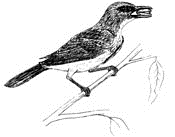Vertebrate Pest Conference: Proceedings

Vertebrate Pest Conference Proceedings: 17th (1996)
Date of this Version
1996
Document Type
Article
Citation
Published in Proceedings: Seventeenth Vertebrate Pest Conference … 1996, ed. Robert M. Timm & A. Charles Crabb (University of California, Davis, 1996).
Abstract
Between 1988 and 1995 populations of rats on agricultural premises were sampled to investigate the distribution of anticoagulant-resistant rats in England and Wales. In total, approximately 1,670 rats from 115 locations were tested for resistance to warfarin. Rats that were warfarin-resistant were subsequently tested for resistance to difenacoum, and since 1991 for resistance to bromadiolone. In some cases rats were also tested for resistance to brodifacoum, and in 1995 for resistance to flocoumafen. The results of these tests showed that there was a high prevalence of resistance to the first-generation anticoagulant, warfarin, in several regions of England and Wales. Rats from most populations sampled since 1991 appeared to be more resistant to bromadiolone than difenacoum, but in central southern England there were some populations where the reverse was true. In this same part of the country there was a relatively small focus where the rats had high degrees of resistance to several anticoagulant rodenticides. There was little evidence of resistance to brodifacoum or flocoumafen. The data are discussed with respect to the impact of anticoagulant rodenticide resistance on control of rats in the United Kingdom.
Included in
Animal Sciences Commons, Bioresource and Agricultural Engineering Commons, Environmental Engineering Commons


Comments
Copyright © 1996 (where applicable) by the Vertebrate Pest Council of the Vertebrate Pest Conference. Used by permission.